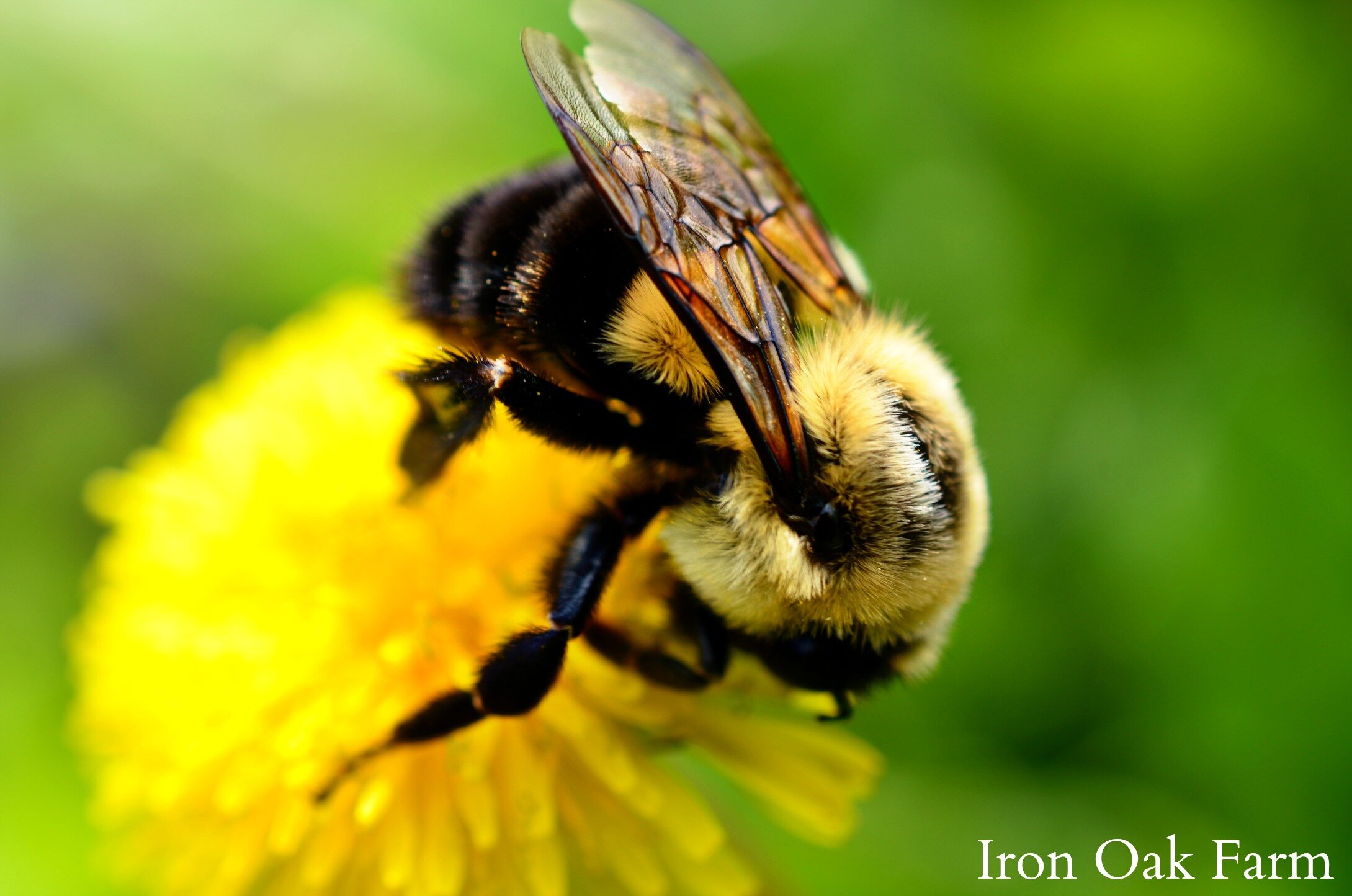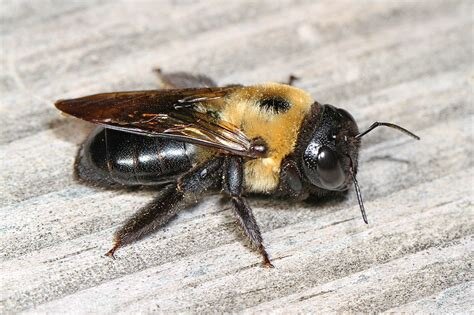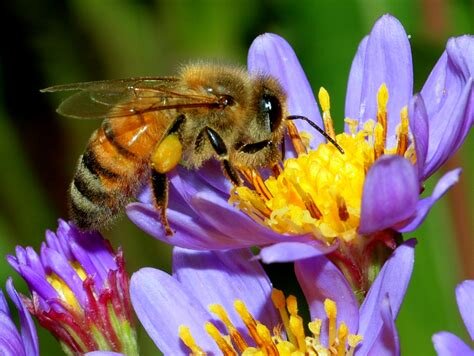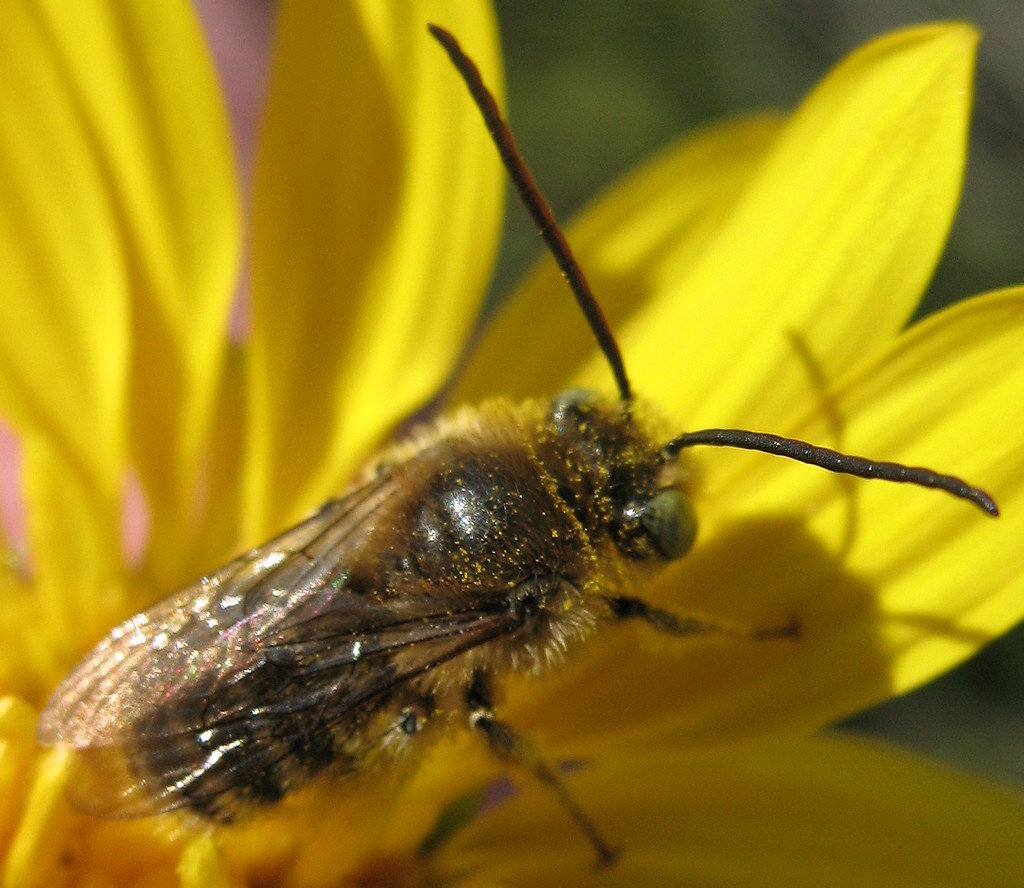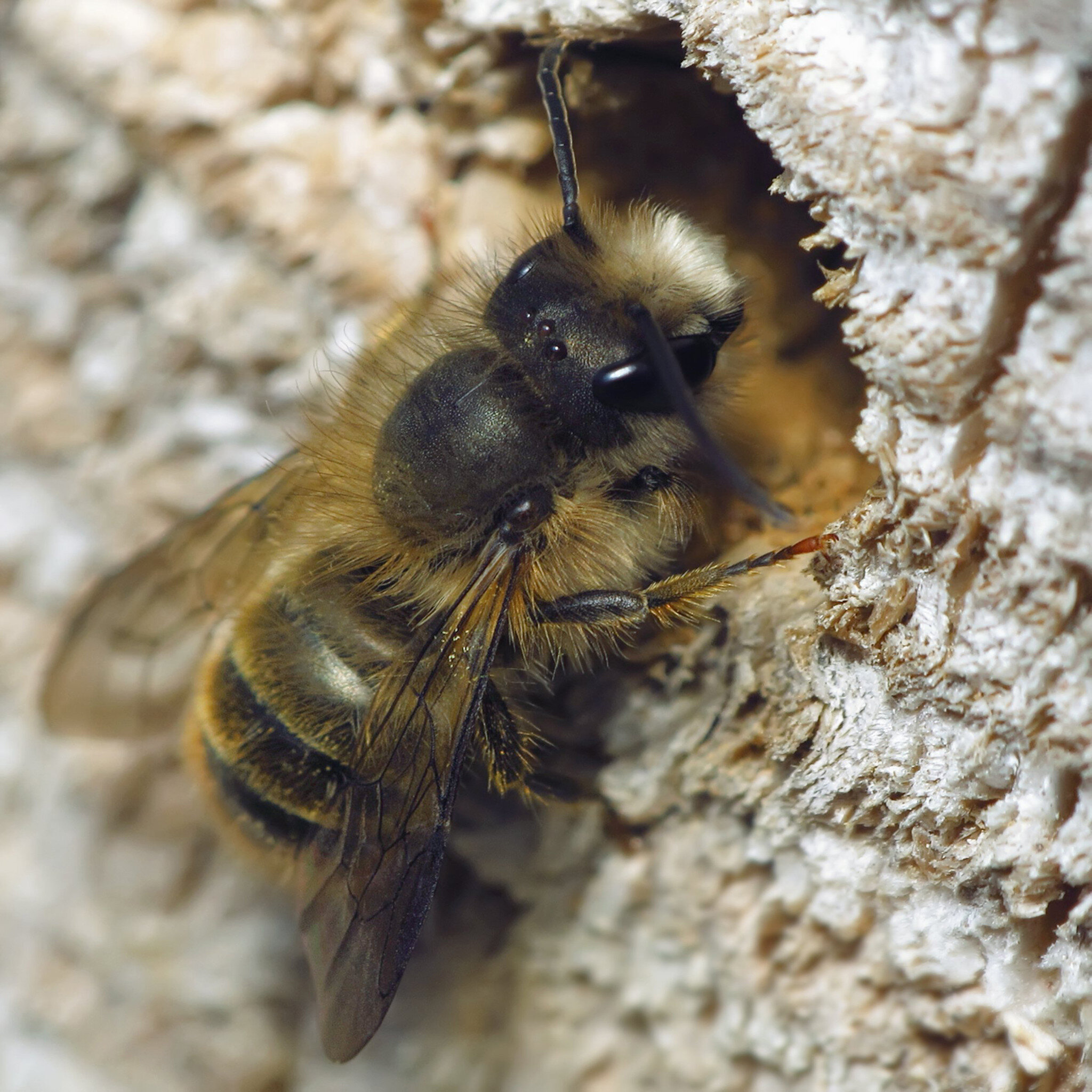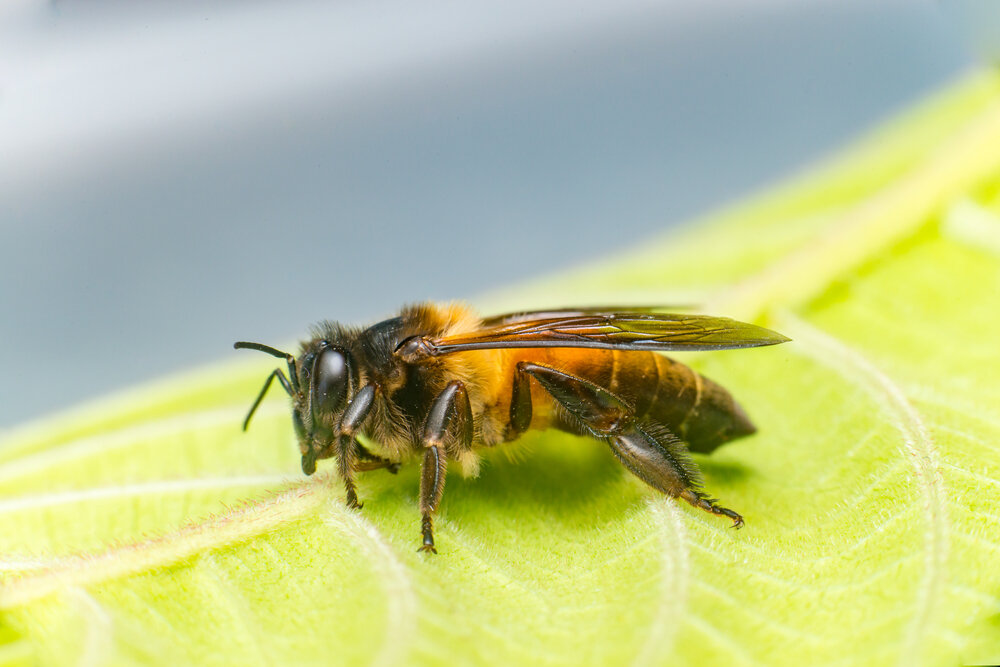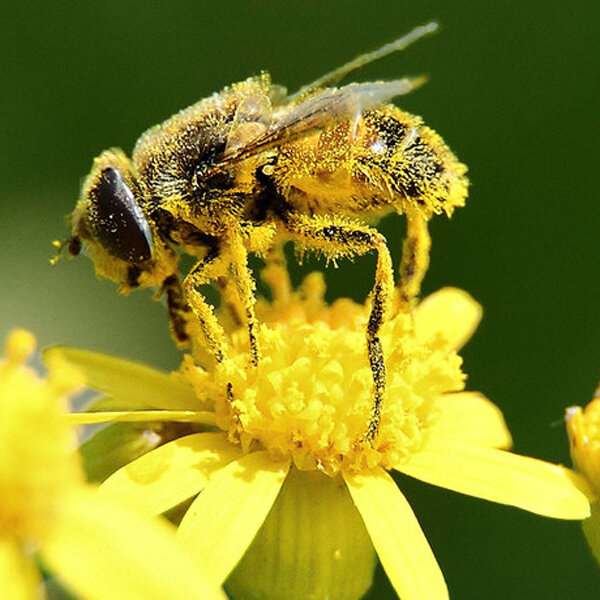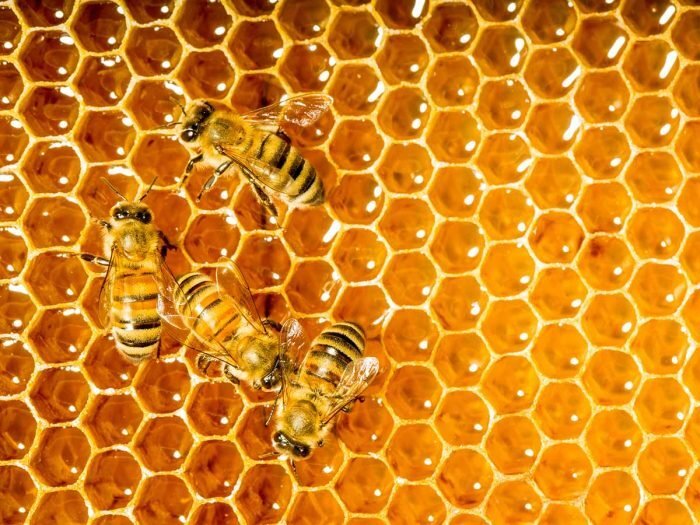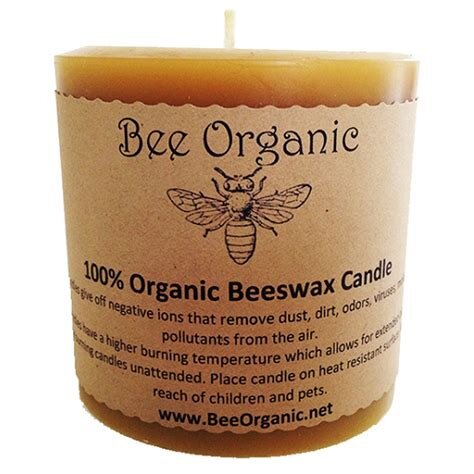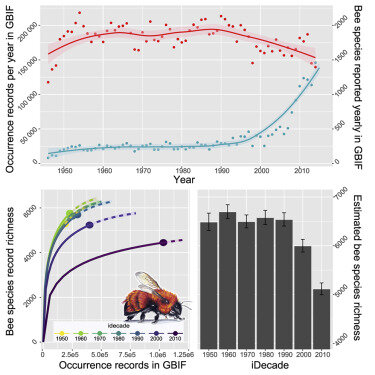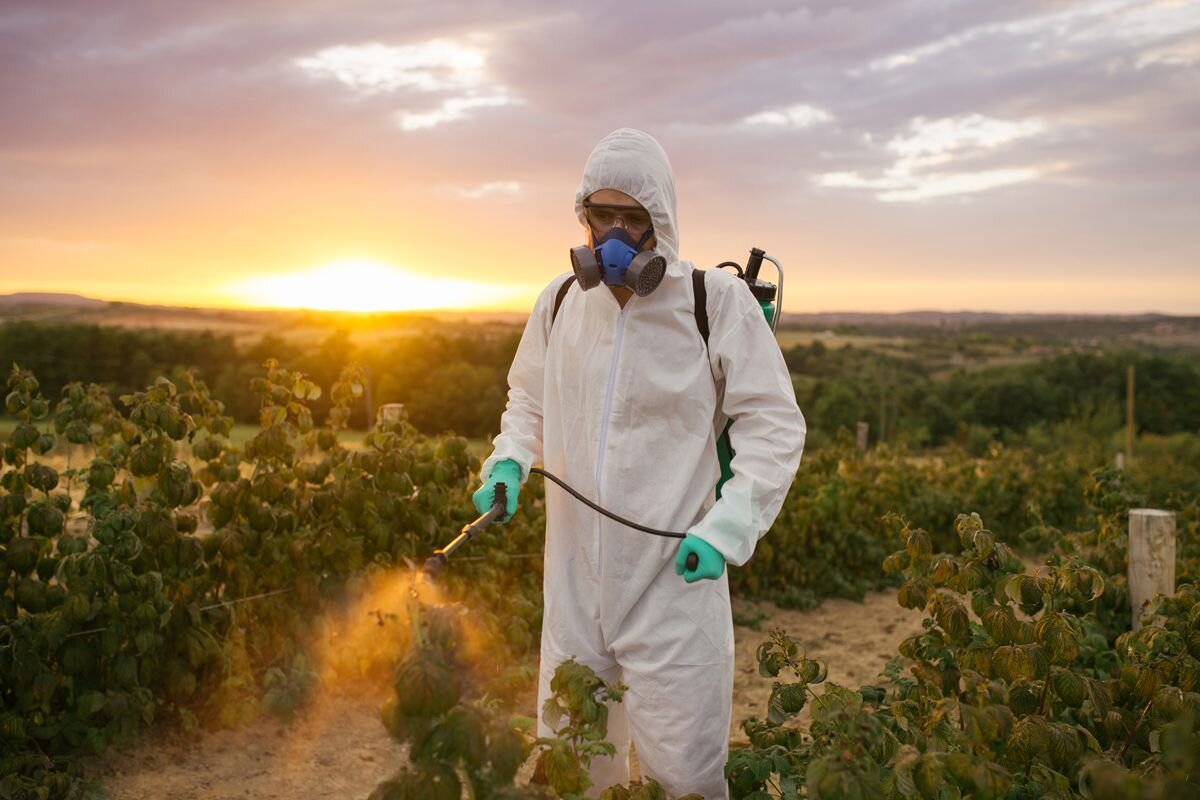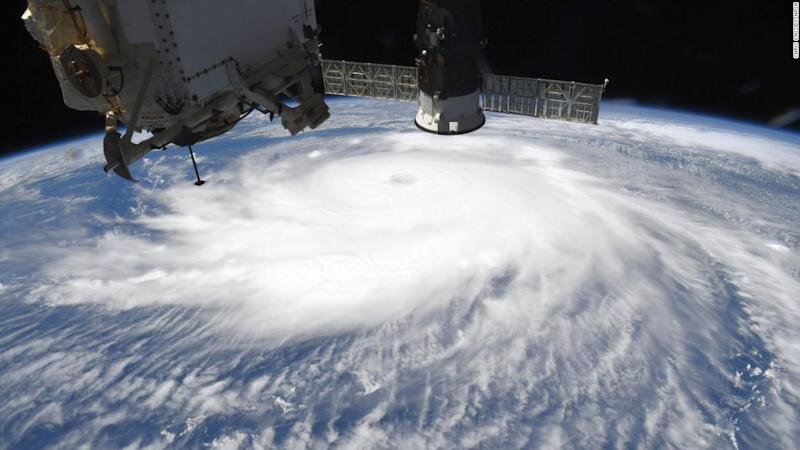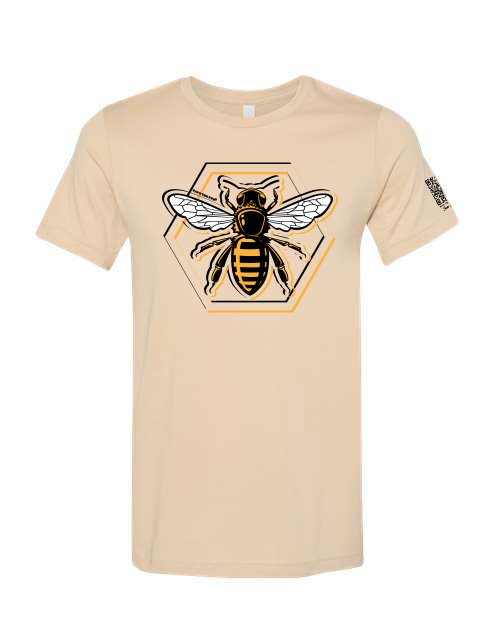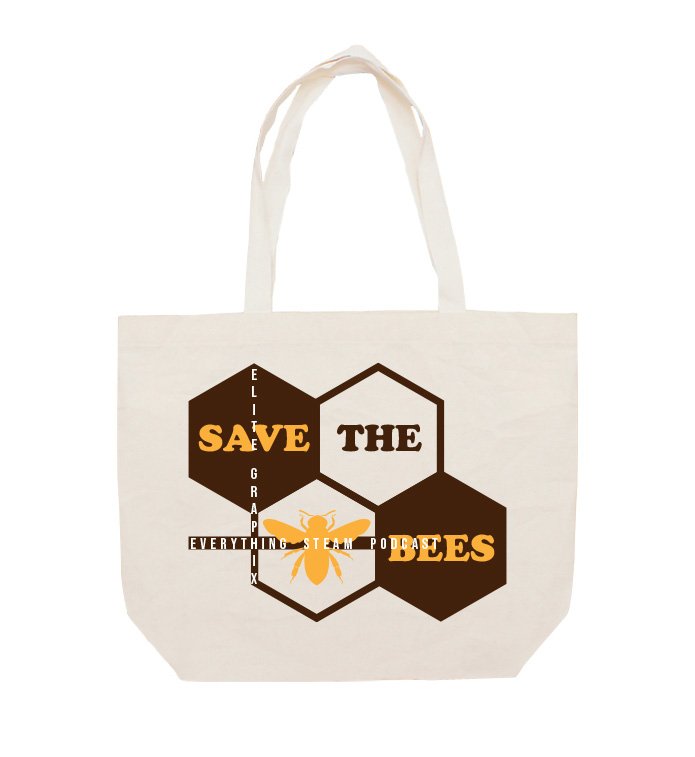Save the Bees
What are Bees?
Whenever you are out at the park or hanging out in your yard, do you ever notice the little yellow and black insect buzzing around from flower to flower, just coated in a yellow substance called pollen? What you are witnessing is more than likely a bee! Bees are a superfamily of insects in the suborder of Apocrita. The bee superfamily consists of more than 20,000 species including the most famously known honeybee and the bumblebee. Most Entomologists confirm that bees have been on Earth for roughly 120 million years. Bees provide a great deal of impact for such an organism that is only 2mm-4 cm at full adulthood. Because bees are part of the insect class, they have six legs like all other insects. The interesting part about bees is that they have five eyes and 2 pairs of wings.
To distinguish bees by name, female bees in the hive, except for the queen, are called worker bees. Their male counterparts in the hive are then referred to as drones. Male bees are usually short-lived and never collect pollen, nor do they have other responsibilities in connection with providing for the young. The sole mission for the drones are to mate with the queen. Female bees however do all the work, and typically have special anatomical structures that assist them in carrying pollen. Most bees are polylectic, meaning that they gather pollen from a wide variety of flowers. However, some bees collect pollen only from flowers of certain families, while others collect from flowers of certain colors. Oligolectic bees are much more picky, and only gather pollen from a few related kinds of flowers. The mouth parts of bees, are pollen-collecting and pollen-carrying devices, that seem to be adapted to different flowers of choice (Defining the Bee).
Most bees are nonsocial, in habit, and do not live in colonies. In these species, each female makes her own nest and looks after it. Some solitary bees make chimneys or turrets at the nest entrance, while others nest in wood or in the pith of twigs or canes. Interestingly, most solitary bees are short-lived as adults. Some species may be in flight only a few weeks of the year, having spent the rest of the year in their cells as eggs, larvae, pupae, and young adults. Solitary bees provide all of the food the larvae needs to complete development when the cells are sealed. All the while, social bees such as the bumblebee and the honeybee, feed their young progressively.
Types of Bees
Although the word “bee” makes most people picture the domesticated honeybee, Apis mellifera, more than 20,000 species of bees have been described from all over the world. Here are just a few:
Africanized Honey Bees: (Africanized Honey Bee Facts)
Bumblebees: (Bumblebee Facts)
Carpenter Bees: (Carpenter Bee Bio: Penn State University)
Honey Bees: (Honey Bees: University of Arkansas)
Long-Horned Bees: (Longhorn Bees: Missouri Department of Conservation)
Mason Bees: (Mason Bee Quick Facts)
Plasterer Bees: (Carpenter Bees: NC State)
Stingless Bees: (Stingless Bee Quick Facts)
Sweat Bees: (Sweat Bees: University of Florida)
Yellow-Faced Bees: (Yellow-Faced Bee Facts: Dept. of Land & Natural Resources)
Why are Bees Important?
Pollination: The most important thing that bees do is pollinate. Pollination is needed for plants to reproduce, and so many plants depend on bees or other insects as pollinators. Bees depend on flowers for food, which consists of pollen and nectar. As bees go from flower to flower gathering pollen, a small amount is rubbed from their bodies and deposited on the flowers they visit. This loss of pollen is significant, for it often results in cross-pollination of plants (What is Cross Pollination)! Bees carry pollen on their hind legs in a pollen basket or corbicula.
One honeybee can pollinate a 1000 flowers in a singular day, and roughly 80% of pollination services come from wild bees while the remaining 20% comes from the tamed bees of commercial beekeepers. One bee hive can be responsible for around, and not limited to, 8,000 acres of land - depending upon the concentration of agriculture in the area! It is easy to say that bees are responsible for the vast majority of pollination!
Crop production: Bees are vital, because they pollinate approximately 130 agricultural crops in the United States alone, including fruits, fibers, nuts, and vegetable crops. While honeybees are America’s primary commercial pollinator, there are over 4,000 types of bees in the United States -adding anywhere from 15-18 billion dollars annually to improved crop yield and quality.
Globally speaking, pollination is the highest agricultural contributor to yields worldwide, contributing far beyond any other agricultural management practice. Therefore, bees and other pollinators make important contributions to agriculture. Pollinators affect 35 percent of global agricultural land, supporting the production of 87 of the leading food crops worldwide like coffee beans, cocoa & bananas. Plus, pollination-dependent crops are five times more valuable than those that do not need pollination. The price tag of global crops directly relying on pollinators is estimated to be between US$235 and US$577 billion a year. Because of a growing population and demand, their quantity is on the rise.
The crops also depend upon the frequency in which their flowers are visited by pollinators such as bees. Flowers that are visited more often by bees will produce larger and more uniform fruit than those visited less often. This beneficial effect of pollination is most obvious in tree fruit such as apples, pears, and mangos.
Additionally, the volume of agricultural production dependent on pollinators has increased by 300 percent in the last 50 years. These figures reflect the importance that pollinators have in sustaining livelihoods across the Earth. Pollinator-dependent food products greatly contribute to healthy diets and nutrition. Pollinated crops also provide income for farmers, in particular, smallholder farmers and family farms, especially in developing countries. With three out of four crops across the globe producing fruits or seeds for human use as food, it is quite easy to say that we need bees to continue what we do on a global scale.
Why Bees Matter: Food and Agriculture Organization of the United Nations
Meat & Dairy Industry: Roughly 35% of the food in which we directly consume in the United States is pollinated by bees. But then, they also indirectly effect 65% of our consumption. A big piece of that 65% is the meat & dairy industry. Livestock across the board has to be supported by either supplied feed or free range feed. Supplied and free range feed are both widely pollinated by bees and other pollinators. Alfalfa, stylo, corn, and some soy beans make up a big percentage of the crops needed to support livestock. So, without bees, it would be a lot harder to feed the livestock for conventional meat consumption and the additional products that people seek out.
Honey: Yes! Honey! Who doesn’t love honey. The United States honey production in 2019 totaled 157 million pounds, which was up by 2% from the totals accrued in 2018. The average American consumes 1.3 pounds per year according to the United States Department of Agriculture in 2019, which seems to be an average of 500 million pounds of honey consumed by the United States alone. There were 2.81 million colonies producing honey in 2019, and the average yield per colony was found to be 55.8 pounds. Yeah, that’s a lot of numbers, and needless to say - that’s a lot of honey produced.
As you’d expect, honey is an essential product. Honey can be found in many everyday applications such as cooking recipes, hot beverages and medicines (9 Unexpected Uses for Honey). Unfortunately, honey is quite demanding on bees, as you may well assume. The average forager makes about 1/12th of a teaspoon of honey in its lifetime, and to make just one pound of honey takes ROUGHLY 2 million flower visits by the bees! So tip the cap next time you see a bee working in the field!
So how can honey be made by bees? Honey starts as flower nectar, which are collected by bees on their trips outside the hive. This nectar gets broken down into simple sugars when transported to the hive, exchanged from bee to bee, and stored inside the honeycomb. Because of the design of the honeycomb, and the constant fanning of the bees' wings, evaporation takes place and subsequently creates a sweet liquid honey. Interesting Parallel: just like how a beer’s flavor and color [SRM] is influenced by the products in the production, the honey's color and flavor also vary based on the nectar collected by the bees. For example, honey made from orange blossom nectar might be lighter in color, whereas honey from avocado or wildflowers might have a darker looking amber color.
20 Uses for Honey: Huffington Post
Wax Products: Last but certainly not least, bee wax. Beeswax (cera alba) is a natural wax produced by honey bees of the genus Apis. The wax is formed into scales by eight wax-producing glands in the abdominal segments of worker bees, which discard it in or at the hive. Bees wax is particularly produced by worker bees, and is most easily accomplished by worker bees younger than 17 days old. The wax glands of older bees then decay after they begin daily foraging flights. Once the wax is produced, the hive workers collect and use the bees wax to form cells for honey storage, larval/pupa protection within the beehive. In terms of human usage, bees wax can be found in many different products such as candles, deodorant, perfume, lotion, soaps, polish and much much more. Therefore, beeswax is essential for the production of honey, the protection of their next generations, and for the people who use it through the consumer market.
Cool Things You Didn’t Know About Bees
Honey bees can communicate through dance, see below:
The most common form of communication among honey bees is through chemicals called pheromones. A pheromone is a secreted or excreted chemical factor that triggers a social response in members of the same species (How Bees Communicate With Pheromones).
The Western Honeybee can fly about 20 mph
Only Honeybees die after stinging. This is due to the sting becoming lodged into human skin, thus injuring the bee as it tries to fly away. Other species, such as bumble bees, can sting repeatedly without dying.
What is the Current Status?
The Anthropocene Epoch (National Geographic; Anthropocene) has been coined to be the sixth great extinction in Earth’s 4.6 Billion years of existence. But this is the first time in which a mass extinction has ever been caused by a species. Extinctions of the past have been caused by plate tectonics, meteor strike, or intense instantaneous climactic events. Incase you were wondering, Anthropocene is derived from the Greek words anthropo for “man” and cene for “new”. So this mass extinction conveys the significant impact that humans have made on the Earth’s ecosystems, which includes the acceleration of climate change. Please see details about the Anthropocene in the Ted Talk YouTube video below:
In the United States alone, beekeepers have lost roughly 30% of their colonies in 2006, with total annual losses as high as 42% (Disappearing Pollinators: Penn States University). Additionally, it’s very important to note that historical loss rates before 2006 were roughly 10-15%. That’s a doubling effect due to external pressure on bee populations in the United States, and that’s without even mentioning global trends (yet). For the record; Oklahoma lost 85% of its bee population, Maryland lost 75%, and Nebraska lost 60% - all between 2016-2017. Paul Stamets, a world renown Mycologist stated that he met a Beekeeper in Washington state, that lost 75% of his 35,000 bee hives in that year(Joe Rogan Experience #1035 - Paul Stamets)!
Globally, pollinators like bees are in rapid decline for many reasons that resonate with the Anthropocene. GBIF [Global Biodiversity Information Facility] data reports that the number of bee species each year has declined rapidly - with uncertainty decreasing as time passes. Approximately 25% fewer species were found between 2006 and 2015, than before 1990 (Worldwide Decline in Bee Species Richness).
Colony Collapse Disorder [CCD] is a collection of world wide threats that kills bees by the millions (Colony Collapse Disorder; EPA). Colony Collapse Disorder is when the majority of worker bees [honey bees] in a colony disappear. Leaving their queen and undeveloped bees behind. CCD is a direct correlation to many issues that will be addressed in the following section on causation.
Why are Bees Disappearing?
“The 1990s marked the beginning of a globalization era that saw a large acceleration in land-use transformation worldwide, often resulting in a replacement of diverse habitats by monocultures, along with increased used of agrochemicals; this change, compounded with climate change and international bee trade and consequent pathogen introduction, represents a tough challenge to wild bee populations” said Eduardo Zattara, a research associate in the Indiana University Bloomington College of Arts and Sciences' Department of Biology
Varroa Mites: In the 1980’s, the Varroa Mite was introduced into the United States. These mites are extremely small and highly dangerous. Western honey bees are mostly effected compared to the other species of bees across the world. Since 1904, the Varroa Mites have now spread to all parts of the world with the exception of Australia. Varroa Mites will latch onto the backs of bees and inject a poison into them. This is why we are seeing a smaller average of bee pollination time frames as noted in the previous section. But here is the real problem… although researchers across the world are displaying promising ideas, the Varroa Mites are adapting and becoming immune. South-Eastern Asian bees are quite immune to the attacks of Varroa Mites, but our western established honey bees have not been blessed in the process of evolution yet in means of developing a defense mechanism (Bee Health & Varroa Mites | The Danger of the Varroa Mite)
Inorganic Agriculture: Just to quickly define inorganic agriculture, this type of farming uses pesticides, chemicals and synthetic fertilizers to grow produce for human and livestock consumption. Pesticides is the main focus with respect to bee population decline. Neonicotinoid pesticides are commonly found in agricultural areas, and they have been found to kill and effect bees’ ability to reproduce. Two studies were performed in Canada looking at honeybees while the other looked at three species in the UK, Germany & Hungary.
They found that neonicotinoids do not obliterate bee colonies outright, but instead kill them over extended periods of time. The pesticides also threaten bee queens in particular. Which means, colonies have lower reproductive rates (Neonicotinoid Pesticides & Bees). But this commonly used pesticide is not only found on the crops that are sprayed, but also other surrounding specimens that bees pollinate such as wildflowers, clovers, trees, and much more. Neonicotinoids and other pesticides will dissolve in water, and enter the water table that can be sucked up by other plants further away from the spot where the pesticide is applied. Amro Zayed, a biologist at York University in Toronto found this to be true! Neonicotinoids and other pesticides were found on all types of bees in the hive such as; forager bees, nurse bees, larvae. He and his team also concluded that the pesticide was detected on the pollen and nectar of the crops themselves, along with plants in the surrounding area due to agricultural runoff.
Just wait, there’s more! Zayed’s team also found combinations of herbicides, fungicides and other pesticides on the dead bees examined. For example, the sublethal effects of some fungicides can negatively affect honey bees in a way that resembles nutrition deficiencies or weakens honey bees by compromising the immune system, thus increasing susceptibility to parasites [e.g., Varroa mite, Varroa destructor] and/or pathogens [e.g. Nosema cerane]. In addition, exposure to the fungicide, myclobutanil [Eagle], has been shown to have sublethal effects by reducing the respiration rate of bee workers. Therefore, the sublethal effects of fungicides not only can impact individuals but can also lead to colony losses (Effect of Fungicides on Bees).
Herbicides such as the most infamous one Roundup, that is so widely used commercially and residentially contains a chemical called glyphosate. Researchers are mounting expeditions to prove that glyphosate is part of the population decrease of bees, and have found promising results. Roundup is the most widely used herbicide in the world according to National Geographic, and over 150 countries, the usage amount has went up from 11 million pounds in 1987 to 300 million in 2012. Just as the Pesticide, Neonicotinoid, glyphosate is being proven to take the lives of bee hives and effect their reproductive abilities (Herbicides, Bees & Food).
Climate Change: Climate change is making bees disappear at a rate they can’t keep up with to replace themselves. The amount of local extinctions are eight times more common than colonization events fore bee populations. Climate across the US and Europe has changed drastically due to human activity. Since the dawn of the Industrial Revolution, we have warmed the planet by 1.3 degrees Celsius, which is close to the 1.5 degrees that's considered a critical warming threshold. This has driven stronger and more widespread bumblebee declines because of the increasing frequency of hotter temperatures, and the drying out of habitats (Bumble Bees & Climate Crisis; CNN).
To briefly explain, climate change is an extremely complex situation that doesn’t just involve the temperature of the Earth… it also changes the variability of the weather patterns of the Earth (Climate Change Weather; US EPA). In short, water vapor is a greenhouse gas, and as the Earth warms due to the Green House Effect, more water will evaporate off the surface and become water vapor. With an excess of water vapor will cause weather events to be more extreme. The larger the concentration of water in the atmosphere, the more water will tend to fall in an event. Here’s the thing.. water evaporation not only happens on lakes and oceans, but also in the soil. This will dry up plant life and make it harder for them to thrive.
This poses two inescapable issues for bees. Bees cannot perform their pollination process in heavy rains, and due to plant life dying from an increase of evaporation, the bees will have less to pollinate and less food to survive off of. Climate change is also causing habitat loss as bees fail to migrate to cooler areas and establish new hives. A recent study on bumblebee migrations found that bee territories have shrunk by nearly 200 miles in North America and Europe (Climate Change: Bad for Bees).
Rising CO2 May Contribute to Bee Population Decrease
Climate Change Reduces the Abundance and Diversity of Wild Bees, Study Finds
Climate Change Reduces the Abundance and Diversity of Wild Bees
Repercussions
It is probably very obvious what the repercussions are at this point in the read. Bees are absolutely critical to our overall production of crops, biodiversity, and oxygen production. Loss of food production is absolutely critical in a world where human development is skyrocketing due to exponential population growth. Out of the 100 crop species that provide us with 90% of our food, 35% are pollinated by bees, birds and bats (Bees & Pollination). It’s that simple. Bees pollinate everything you can think of that you regularly consume like coffee, corn, beans, mango, asparagus, onions and the list goes on and on.
As we mentioned before, the meat industry is highly impacted. The crops in which feed cows, pigs, chickens and other meats that are widely enjoyed will perish and subsequently effect the efficiency of the meat industry. And I know what you are thinking! This means worldwide starvation, especially in third world countries first. This is a scary notion (Helping Agriculture's Helpful Honey Bees).
What are the consequences of starvation? People will do anything they can to survive which can be extremely detrimental to crime rates in any location throughout the world. Terrorism, robbery, murder and other crimes will become mainstream headlines for the foreseeable future until a solution would come about (Hunger Breeds Violence).
Clothing is something you may not think of though. Cotton & hemp are very reliant on pollination by bees. Cotton & hemp production will take a large hit and be significantly reduced, which will change the way we choose our clothing in the future (Importance of Bee Pollination for Cotton Production).
Plant biodiversity collapse is quite obvious if crop production would fall through the floor. So some plants are pollinated by the wind, but that rate is very slow. Insects are the primary pollinators on the planet. Yes, beetles, bats and butterflies also pollinate, but bees are definitely the most efficient insects for this purpose as we addressed before.
Effects on other animals are quite prevalent. Herbivores, who depend on certain plant species, will be affected first without wild bees being around to pollinate wild plants. They would go extinct if plants ceased to exist because of the slow process of evolution. Due to the declining population of herbivores, carnivores will begin to suffer immediately. Without herbivores to prey on, the carnivorous species of the Earth will have a tough time finding food to survive.
How to Help Save the Bees!
Plant diverse types of flowers in your landscape. Try to make sure you have something in bloom from April through the hard freezes of early November. The most critical time for the bee is early spring, the summer dearth usually in July, and late fall.
Use clover in your grass seed mix, or allow it to come into your lawn naturally.
Celebrate dandelions in spring and don’t mow until they’ve bloomed. Avoid applying pesticides to your lawn when clover or dandelions are in bloom.
Plant high nectar and pollen producing shade trees like basswood or linden, maples and willows where appropriate.
Avoid purchasing plants which may have been treated with systemic insecticides which could harm bees when they collect the plants nectar or pollen. Purchase plants that are labeled as noenicitinoid free, or ask your local garden center about bee-friendly plants.
Purchase locally grown or USA produced honey. There have been reports that some imported honey contains cane or corn-based sugar. While the USDA tests imported honey, they cannot test every batch. Make sure you are buying true bee-friendly honey by purchasing only USA produced honey.
Limit the use of insecticides and herbicides on your lawns and landscapes, especially if anything in the area is in bloom. If you are spraying, do so at night, when the bees are not flying. Let your neighbors who have bees know so they can close them up when you are spraying.
Work with your town or county governments to make publicly owned spaces more bee friendly.
Fall asters (New England asters) and goldenrods are two of the most important fall flowers for honey bees and bumble bees. They provide some of the last fresh food they will eat all year. Keep these plants in flower by delaying the mowing of them until the the tops die down after a hard freeze. Better yet, leave them over the winter to provide seeds and habitat for birds and other wildlife.
Grow a cover crop like buckwheat or phacelia. Both produce massive amounts of nectar that bees love. Once in flower you can delight in the hum of the field, alive with healthy, hungry bees.
Sources:
How You Can Keep Bees From Becoming Endangered: Ohio State University
10 Ways to Save Bees: University of New Hampshire
Appreciation Portion
Thank you for making the conscious decision to become more informed on Earth’s Beautiful Bees! Also, thank you for your purchase or future consideration of our clothing line, Ecolite (See Below), which allowed you to consume this important message. We appreciate your continued support, so that we can inform and invoke change in our society for the benefit of humanity and future generations to come.





